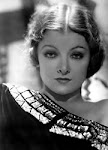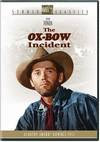The Birth of a Nation
No Way Out
West Side Story
It is often said that slavery – and by extension, racism – are the birth defects with which our nation was born. Although slavery was abolished in 1863 and the era of state-sanctioned segregation “officially” ended in the 1963s, racism remains – despite the election of Barack Obama as president of the United States.
The three primary faults of racism, and these affect both the perpetrators and the victims, are: it limits people’s horizons; it makes people do stupid things, often to their own detriment; and it brings out the meanness and sadism in people. And what sustains racism is misinformation and false beliefs that foster fear – which brings us to The Birth of a Nation (released in 1915 in black and white).
This silent movie, which was the America’s first epic feature film, was made to justify and glorify the existence of the Ku Klux Klan. And while it does offer moments of truth – like when it observes that “the bringing of Africans to America first planted the seeds of disunity” and calls war “the breeder of hate” – it is essentially a string of falsehoods that demean, vilify and demonize people of color. It also casts in a bad light those whites who worked to help blacks transition from slavery to free citizens – except for the sympathetic portrayal of President Lincoln.
Perhaps the most egregious part of the movie is the fact that many of the people of color are portrayed by whites in blackface. And while the phenomenon of actors playing roles that cross racial lines dates back at least centuries – Shakespeare’s Othello being the most notable example – this movie relies on cartoonish portrayals of power-crazed mulattos; ignorant darkies, both “good” and “bad”; and, horror of all horrors, lustful black men seeking to debase virtuous white women who would rather die than succumb to such advances. Even the daughter of the white politician who promises to lift black men to the equal of whites falls prey to this “atrocity.” And, not surprisingly, he is appalled at the thought of his daughter being the wife of his mulatto protégé.
I also found negatively notable the depiction of black Union soldiers, who rampage through a town, kill and terrorize its inhabitants while stealing and destroying their belongings, and keep whites from voting after the war has ended. And despite all the destruction and fear they seem to cause, they are also depicted as cowards.
Conversely, the southern white soldier is shown to be a valiant being fighting a losing battle for a noble cause – the protection of states’ rights. But the primary states’ right that they want to defend is the maintenance of their economic system that relies on the institution of slavery. And no where in the movie is slavery acknowledged as a bad thing. In fact, there isn’t even a mention of Lincoln’s Emancipation Proclamation.
Then there is the birth of the Klan, which is seen as the answer to the atrocities being suffered by Southerners after the war and is inspired by noticing that black children are easily scared by white children covered by white sheets. According to the movie, the Klan originally was meant to be an organization that just scared its victims but did them no bodily harm. The violence used by the Klan only began after violence was used against them. And by the end of the movie, the Klan restores the sense of pride and security that white southerners – and good darkies – enjoyed before the war.
The hypocrisy of The Birth of a Nation is probably best exemplified by its closing statement: “Liberty and union, one and inseparable, now and forever.”
Racism’s faults are dramatically depicted in the movies Now Way Out (1950, b&w) and the musical West Side Story (1961, color).
In No Way Out, two white brothers named Biddle are wounded by police during the commission of a robbery and taken to the prison ward of the county hospital, where they are to be treated by a newly minted black doctor. One of the brothers, Johnny, is seriously injured and seems to not be aware of his surroundings; the other brother, Ray Biddle, was shot in the leg, is in full control of his other faculties and rants about them being treated by a black doctor, Luther Brooks. Luther suspects a brain tumor is responsible for the Johnny’s problems and decides to perform a spinal tap to confirm his diagnosis.
While performing the spinal tap, Luther is bombarded with racial slurs by Ray. When Johnny dies during the procedure, Ray blames Luther. The doctor then wonders if his reaction to Ray’s rants could have played a role in his treatment of the dead patient. To determine if his diagnosis was correct, Luther wants an autopsy performed, but family permission is needed and Ray refuses to allow it. Luther then finds out that Johnny has a wife, Edie Johnson, and tries to convince her to allow the autopsy. But Edie talks to Ray, with whom she cheated on her husband, and is swayed by his arguments against the autopsy. Ray also stokes the embers of racism within Edie.
Ray then enlists his deaf-and-mute brother, George, to go, with Edie, to the bar in the white section of town where they live and urge their friends to avenge Johnny’s death by going to “Niggertown” and killing as many blacks as they can. But the black community hears about it and Luther finds out that they are organizing a counterattack. After the race riot explodes, victims arrive at the hospital. As Luther is tending to a white casualty, the patient’s mother tells him to take his “black hands’ off her son. This apparently leads Luther to turn himself over to the police to face the accusation of murder for his part in Johnny’s death. Luther knows that a criminal investigation would require that an autopsy be performed. The results confirm Luther’s diagnosis and exonerate him from any culpability for Johnny’s death.
But this isn’t enough for Ray, who manages to escape from the hospital ward and arrives at Edie’s home with a gun and bleeding from his wound. Edie, by this time, has had a change of heart. But Ray tells her he is going to kill Luther and goes to the home of Dr. Wharton, one of the hospital’s administrators. There, he finds Luther and threatens him with the gun. Edie shows up and turns out the lights just as Ray shoots. Luther is wounded but Ray collapses from the loss of blood. Luther then uses the gun and Edie’s scarf to make a tourniquet to staunch the bleeding from Ray’s leg.
As Ray lays sobbing in pain and defeat, Luther tells him, “Don’t cry, white boy. You’re gonna live.”
West Side Story revolves around the love affair between Tony, a white boy who was one of the founders but no longer belongs to a gang called the Jets, and Maria, the sister of the leader of a Puerto Rican gang called the Sharks. These two gangs sing, dance and fight their way through a turf war in the upper Manhattan neighborhood in which they both live. The Jets hate the neighborhood’s “Spic” – a word that is frequently used in the movie – invaders and the Sharks hate the white boys who look down on them and their culture.
Tony meets Maria at a dance that is attended by both gangs, who stay on different sides of the auditorium and resist an attempt by the dance’s chaperone to bring them together. Tony and Maria immediately fall in love, but Bernardo, Maria’s brother, warns Tony to stay away from her. Bernardo has already given his blessing to fellow gang member Chino, who is in love with Maria. But Tony and Maria defy Bernardo with the help of the gang leader’s girlfriend, Anita.
Meanwhile, the gangs agree to have a rumble to settle their turf war. While they are discussing which weapons will be used, Tony convinces Riff, the Jets’ leader and his best friend, and Bernardo to settle the matter with a fist fight. He then tells Maria about his success but she wants to fight to be stopped entirely.
On the night of the fight, Tony shows up to stop it. But things get out of hand and Bernardo ends up stabbing Riff to death and Tony, unthinking, retaliates by killing Bernardo with the same knife. As the police arrive on the scene, the two gangs scatter and Tony becomes a fugitive.
When Maria learns of the incident, she convinces Anita to, against her better judgment, locate Tony and tell him to go to Maria so the two of them can run away together. But when Anita arrives at the Jets’ hangout and tries to deliver the message to Tony, the gang doubts that the girlfriend of the slain Shark would actually want to help the boy who killed him – and then they begin to sexually abuse the girl. The abuse is stopped by Doc, the man who owns the candy store where the Jets hang out. Anita, with revenge for her treatment on her mind, then tells the Jets that Chino knows of Tony’s tryst with Maria and has killed her.
Doc delivers the news to Tony, who then goes out searching for Chino, asking to be killed so he can join his beloved. But Maria is also out looking for Tony and the two eventually see each other across the playground. As they run toward each other, Chino steps out of the shadows and shoots Tony, who dies in Maria’s arms. As the two gangs gather around Tony and Maria, they begin taking menacing steps toward each other. Maria then rises and demands that Chino give her the gunand points it at the gang members. She then chastises both gangs and blames each one it their members for the death of her brother and her lover. In the end, the two gangs come together as contrite pallbearers and lift Tony’s dead body and carry it off the playground.
No Way Out and West Side Story both show the destruction and devastation of racism. People in both stories allowed racism to lead them into doing stupid things that were detrimental to their well-being and that limited their horizons. Ray’s inability to accept a black doctor started a riot that injured and killed many people and his hate-driven desire to kill Luther almost cost him his life. And the inability of Jets and Sharks to get past their race-based hatred of each other successfully and tragically limited the ability of Tony and Maria to share a love that only lasted a few days.
I should confess that because of the subject matter, West Side Story is my favorite musical. And, ironically, although I had great sympathy for the Sharks and what they were going through, I found myself identifying more with the Jets. This was probably the result of growing up in a white neighborhood, which obviously placed confusion in my mind about my own identity. After watching the movie three times that day (that was when you weren't forced to leave the theater after every performance), if breifly crossed my mind that I wanted to be a professional dancer. I had never seen men dance like that before and the idea of emulating those dancers intrigued me. However succumbing to the homophobia, I knew I would never become a dancer because I was afraid that people would think that I was gay – another example of allowing prejudice and fear to limit one's horizons. I trace my current fanatical love of dancing salsa to those prejudices and insecurities of my youth – things I hope I have outgrown.
Subscribe to:
Post Comments (Atom)






























































No comments:
Post a Comment